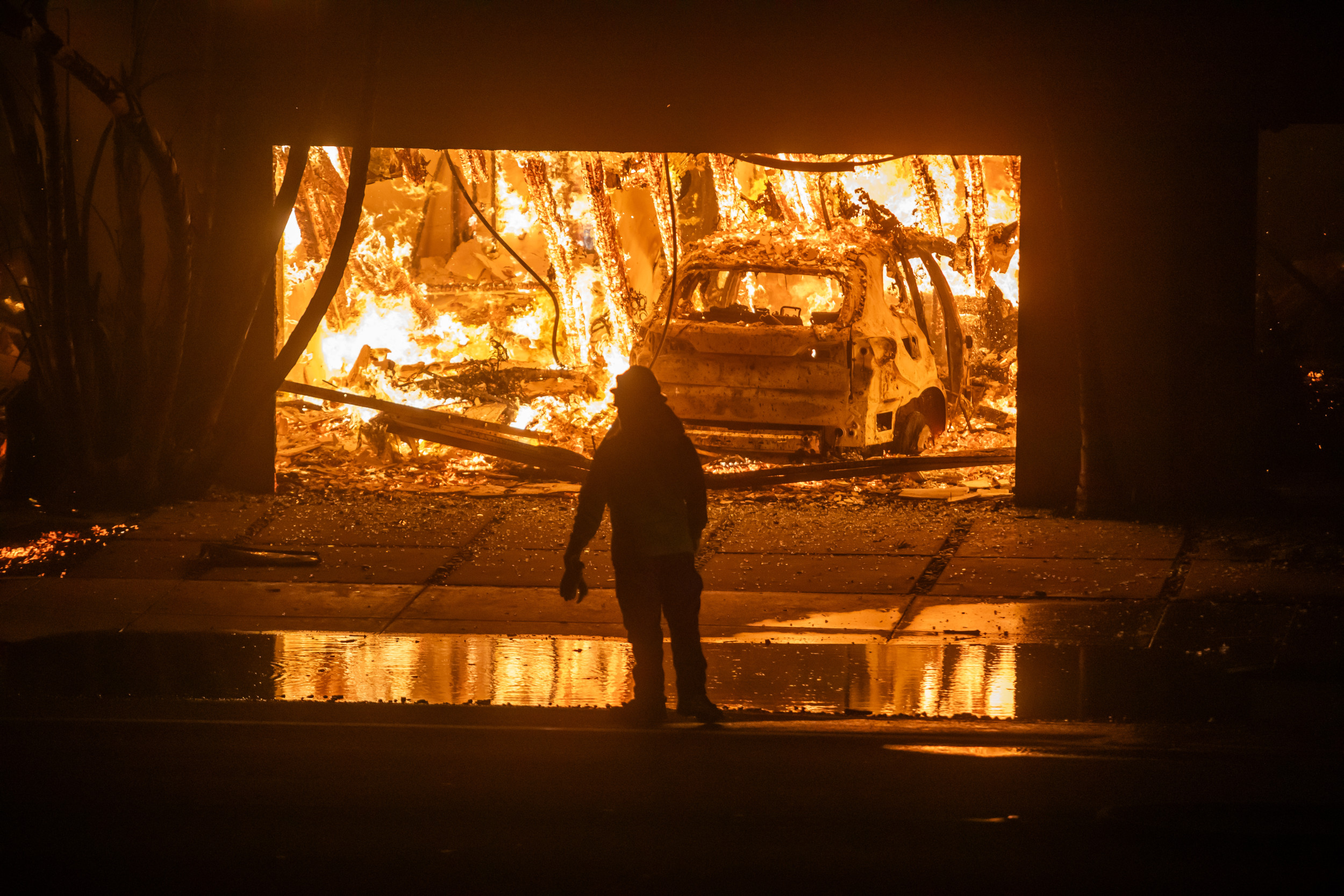Climate science agencies from the U.S., U.K., Europe and Japan confirmed on Friday that the Earth has again recorded its hottest year ever, as greenhouse gases pushed 2024 temperatures beyond the record set just a year earlier.
Annual average sea surface temperatures and the total amount of water vapor in the atmosphere also reached record highs in 2024, contributing to more intense storms and flooding, reported the Copernicus Climate Change Service (C3S), part of the European Centre for Medium-Range Weather Forecasts.

"These high global temperatures, coupled with record global atmospheric water vapor levels in 2024, meant unprecedented heat waves and heavy rainfall events, causing misery for millions of people," C3S Deputy Director Samantha Burgess said in a statement.
In a separate media briefing on Friday, NASA Goddard Institute for Space Studies Director Gavin Schmidt said the connection between human-caused warming and extreme weather events is becoming clearer as those extreme events become more frequent.
"We have done hundreds of analyses of extreme patterns of rain and heat," Schmidt said. "It is very clear that the heat waves we are seeing would not be happening, intense rainfalls we are seeing almost everywhere would not be happening without anthropogenic warming."
Scientists from NASA and the National Oceanic and Atmospheric Administration, or NOAA, noted some of the major extreme events of 2024 including Hurricane Helene in the U.S. which killed more than 230 people across seven states, an early season heat wave in Mexico, flash flooding in Spain and drought in parts of South America that pushed rivers in the Amazon to record low levels.
"We expect to see more extremes in a warmer world," Russell Vose, chief of the Product Development Branch at NOAA's National Climatic Data Center, said. But Vose added that weather disasters also reflect other contributing factors, from natural weather variability to human settlement in high-risk areas.
Several factors contributed to warming in 2024, scientists said, including the El Niño ocean cycle early in the year and a reduction in global cloud cover allowing more sunlight to reach the planet's surface. However, the "primary driver" of extreme temperatures is the accumulation of greenhouse gases in the atmosphere, mainly from burning fossil fuels.
"The global mean temperature will continue to rise as long as we continue to emit greenhouse gases," Schmidt said.
Schmidt said long-term trends of warming are "very clear," and Burgess noted that each year in the last decade is among the 10 warmest on record.
Last year was so hot, Burgess said, that it temporarily crossed the symbolically important threshold of 1.5 degrees Celsius, or 2.7 degrees Fahrenheit, of warming above preindustrial levels.

In the Paris Climate Agreement signed 10 years ago, nations agreed to act to keep global temperatures below a long-term average of 2 degrees Celsius (3.6 degrees Fahrenheit) and preferably below 1.5 degrees Celsius to avoid the most dangerous impacts.
"We are now teetering on the edge of passing the 1.5 Celsius level defined in the Paris Agreement, and the average of the last two years is already above this level," Burgess said.
U.S. agencies NASA and NOAA found the warming since the preindustrial era to be close to, but just below, 1.5 degrees Celsius. Scientists said the very slight difference among the findings is due to different methods and datasets used for the historic baseline temperatures going back to 1850.
Climate scientists said that the targets in the Paris Agreement refer to average temperature over a longer span of time.
"The 1.5 C target is really a stand-in for all of the climate impacts associated with that level of warming," University of Pennsylvania climate scientist and Penn Center for Science, Sustainability & the Media Director Michael E. Mann told Newsweek via email.
Mann said the temperature trend line will cross 1.5 degrees Celsius "in about a decade" at current carbon emissions levels. But rather than focusing on that threshold, Mann said, he would prefer to focus attention on trying to limit every degree of future warming by reducing greenhouse gas emissions now.
Even as the scientific agencies released their report, news footage from Los Angeles showed yet another extreme weather disaster linked to climate change, he said.
"We can already see the devastating consequences of the warming we've already experienced," Mann said, "in the form of the apocalyptic wildfires currently ravaging Southern California."




















 English (US) ·
English (US) ·